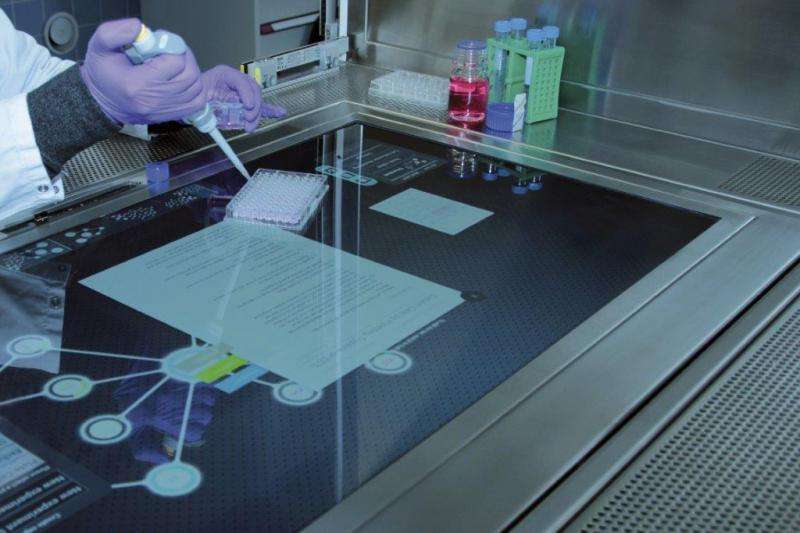Merlin – the digital lab notebook

Scientists have to clearly document their experiments in a reproducible way, but depending on time pressure and the workflow in the lab, that is often adifficult task. "Merlin", a digital lab notebook developed by he Fraunhofer Institute for Manufacturing Engineering and Automation IPA, aims to make scientific documentation easier in the futue.
When working in the lab, scientists document everything they do in a lab notebook. They record how many samples they create and test, what methods they use, and the results they get. As long as everything in the lab is done manually, this system works fairly well. Yet the laboratory environment has changed in the past few years. Semi-automated and fully automated systems have relieved lab workers of a host of monoto-nous tasks. As an example, a pipetting robot can process miniscule amounts of fluids,but the researcher still has to manually record everything the robot does in the lab notebook. However, so much information is involved that the researcher cannot write down all the data collected by the robot. In short: documentation is time-consuming and cannot capture all the necessary details, no matter how hard the scientists try.
A lab notebook with a multi-touch monitor
At the Fraunhofer Institute for Manufacturing Engineering and Automation IPA, the Project Group for Automation in Medicine and Biotechnology PAMB is developing a digital lab notebook they call "Merlin". It ensures reliable documentation of manual, automated, and semi-automated processes. Researchers can view and input data on a table-sized touch display, which also doubles as a work surface. This means they get the data right where they need it. Merlin can also control laboratory equipment and it ensures that the results produced flow diectly into the system. "The program makes documentation easier", says Sebastian Schöning, group manager at Fraunhofer IPA. "You can see precisely what was done in a certain experiment, even years later. We purposely kept the operating interfaces simple, so that Merlin can take as much off the researchers' hands as possible."
Planning and describing experiments using the protocol editor
The core of the program is the protocol editor, which helps the scientists to write up their experiments as protocols and to plan future ones. For example, if they wish to culture certain biological cells, the protocol provides information such as which cells to put into which container along with what growth medium, how high the temperature should be and how often the growth medium needs replacing. To find this information,researchers look back at previous reports – similar to the way a cook browses a cookbook or recipe to find out what ingedients are necessary in what amounts and what steps to follow in preparing the dish. Currently, researchers have to comb through these texts themselves to determine what materials and equipment they need. However, some descriptions – such as those for amounts, timing or materials used – are less than precise, and so scientists have to make assumptions to fill n the gaps. "In the future, Merlin should eliminate the need for this kind of interpretation", says Franziska Maugg, scientist at Fraunhofer IPA. Instead, the protocol editor takes the user through the relevant list step by step. When Merlin suggests materials, the user can "drag and drop" the appropriate symbols over to his or her protocol. If some sections are repeated from another protocol, the user can import them. And if the researcher inputs some information that doesn't quite make sense – perhaps the number of samples is incorrect or a step in the experiment's procedure isn't right – the program alerts them to the problem. "Merlin knows what has to be done. In other words, it has process know-how", explains Schöning.
Automatic documentation in the lab
Once the protocol has been set, the scientist heads to the lab. Without Merlin, scien-tists have to pull off their gloves and manually take notes after every step, but Merlin now walks them through the experiment. A monitor integrated into the lab displays the next step in the process. Documentation is almost automatic because researchers can simply confirm the esults by touching the display. Should something change during the experiment – perhaps the scientists decide to run an alternative version – they can adjust the protocols with just a few "touches". At the press of a button, Merlin can also translate the protocol for automatic systems such as the pipetting robot, control the action of the device, and autonomously store all relevant inputs and results. A further advantage is that the scientists can easily share their knowledge and notes with colleagues on request. If others want to run similar experiments, they can refer to these established "recipes."
Provided by Fraunhofer-Gesellschaft



















